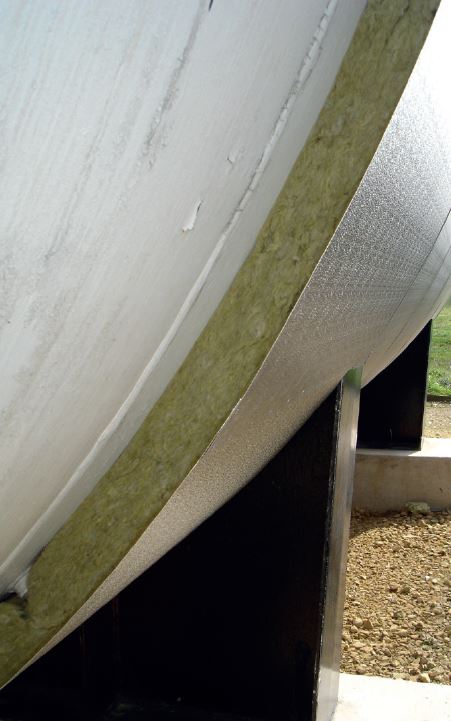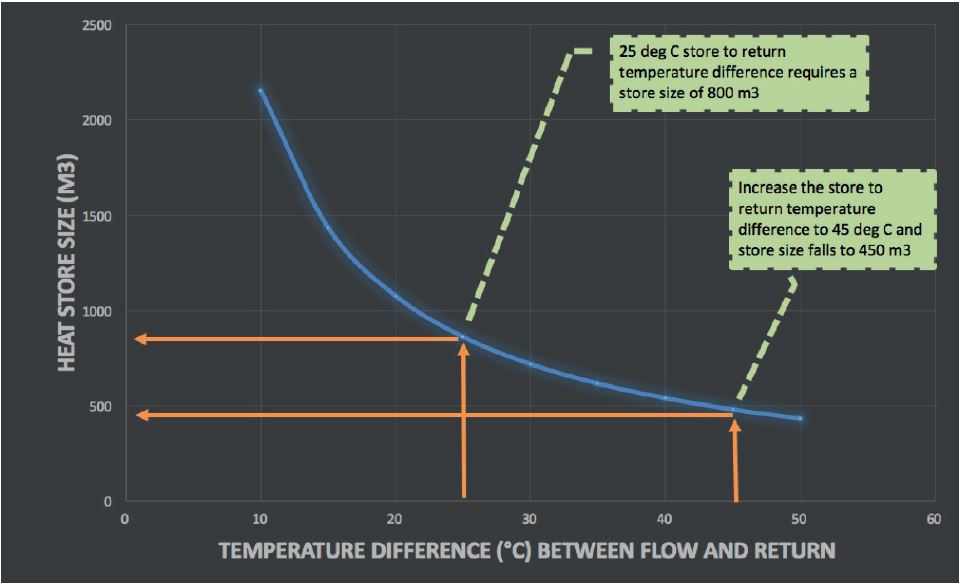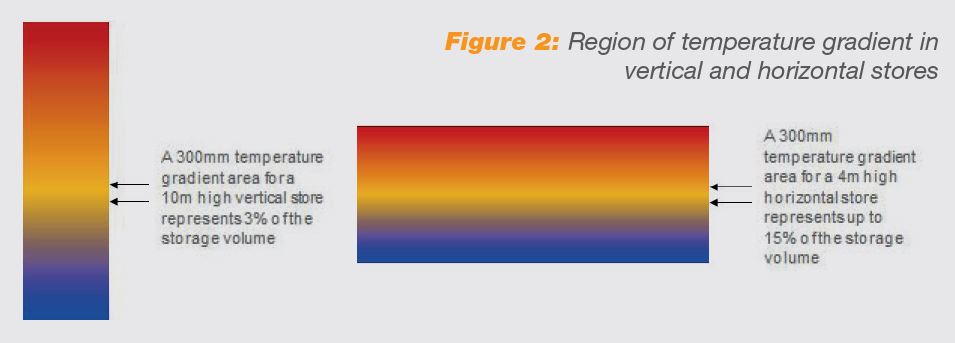Please click here to access the main AHDB website and other sectors.
- Home
- Knowledge library
- Characteristics of modern heat storage
Characteristics of modern heat storage
Read about the key characteristics of an efficient modern heat storage system.
Back to: Modern heat storage in horticulture
Good heat-store insulation
Why does incorporating good thermal insulation in your heat-store design make sense?
The benefits of good insulation
Early heat-store designs rarely incorporated good thermal insulation. The heat they contained was often regarded as a freely recovered ‘waste’, and the fact that an appreciable amount of this heat might be lost to the atmosphere was largely ignored.
Increases in the price of fuels and better controls on stored heat systems have convinced growers and installers that waste heat is just as valuable and useful as primary produced heat. Therefore, it is logical to conserve it to keep costs low.
An uninsulated 500 m3 store operating at 90°C and having a surface area of 200 m2 will emit heat to atmosphere at a rate in excess of 400 kW in cold conditions. This is, potentially, worth over £200 per day at current gas costs and boiler efficiencies. A modest amount of insulation, for example 50 mm of mineral wool matting, will reduce losses by as much as 95%.
Insulation on a heat storage tank
Image courtesy NFU Energy.
High storage temperature, low heating-return temperature
How does the difference between storage and return water temperatures impact heat-store size?
Optimum heating temperatures
The amount of heat that can be stored in a given volume of water is proportional to the temperature difference between its fully heated state and the return temperature from the glasshouse heating system.
In the best systems, water is heated to about 90°C and returns from the glasshouse at 45°C – a difference of 45°C. A less well-configured system might have a storage temperature of 80°C and a return temperature of 55°C – a difference of 25°C. The suboptimum configuration results in 45% less heat being stored, or, putting it another way, the need to increase storage by 80% to obtain the same heat storage capacity (see Figure 1).
Figure 1. This shows how thermal storage requirement reduces with an increase in the temperature difference between storage and return water temperatures
Vertical stores vs. horizontal stores
Most older stores were horizontal, compared with newer designs, which are often upright. The trend now is to make the store higher but thinner. There is a practical limit on the height of stores of about 10–12 metres, because of the water pressure they exert on the heating system.
Other than for structural reasons and the occupation of less ground area, a vertical aspect has some thermal advantages too. Hot and cold water tend to separate in a container and do not naturally mix without agitation. This layering is a useful property, because, as long as the hottest water is drawn from the top and the coldest water is replaced at the bottom, the effective useful storage at the higher temperature amounts to most of the volume of the container. However, there is some wasted volume at the level at which the hot and cold water come into contact. Here, there is usually a zone of graduated temperature water, which limits the effective volume of the hot-water store at high temperature. With a vertical tank, the proportion of the volume of the tank which is taken up by this temperature-gradient area is reduced. In the example shown in Figure 2, wasted store volume is reduced from 15% to 3% by having a 10 m high tank, as opposed to a 4 m high tank.
Figure 2. Region of temperature gradient in vertical and horizontal stores
The heat store as the centre of the heating system
It is important that the control system sees the thermal store as the centre of the heating system and the place from which heat is called before a boiler or other heat generator is switched on (see Figure 3). Sometimes inefficiencies are introduced by making the boiler the ‘lead’ supplier of heat, as this compromises the ability of the store to smooth out the delivery of heat and help the boiler and other equipment operate in the most efficient way.
In this example, the heat demand of the glasshouse is being met by all heat sources, but as long as the heat store has capacity to cope, it will be the preferred heat source for the system.
Figure 3. Using a heat store as the centre of a heating system

Useful links
Information on sizing a heat storage system
Visit our GrowSave pages to read more about energy-related topics
Got a question. Ask a member of the team:
Topics:
Sectors:
Tags:




